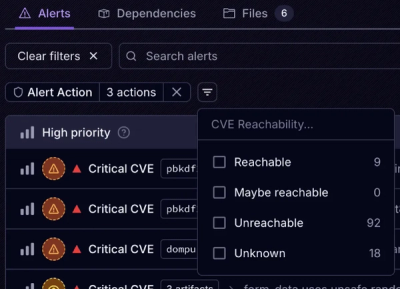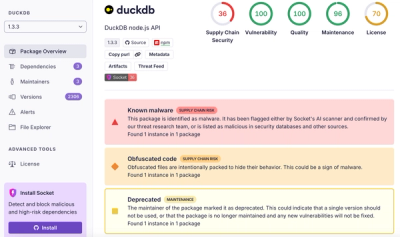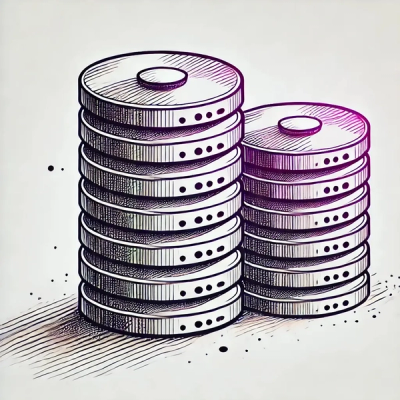
Product
Introducing Tier 1 Reachability: Precision CVE Triage for Enterprise Teams
Socket’s new Tier 1 Reachability filters out up to 80% of irrelevant CVEs, so security teams can focus on the vulnerabilities that matter.
One of the biggest complaints developers have with redux is the amount of
boilerplate and new concepts they have to learn to use it. By using the
robodux pattern the amount of redux boilerplate is dramatically reduced. In
most cases, wiring up action types, action creators, and reducers can be done in
one line of code.
id.The overriding principle is that effects (like sagas) should be the central processing unit for all business logic in a react/redux application. We should remove as much business logic as possible from reducers and instead centralize them inside of our side-effect handlers.
The other primary principle is to think of redux as a database and reducers as tables. This simplifies the action/reducer logic and makes it possible to build reuseable components which dramatically reducers boilerplate.
Please see style-guide for more details.
yarn add robodux
The primary philosophical change between this library and other libraries is to think of your redux store as a database.
Reducers are database tables and operating on those tables should have a consistent API for managing them.
robodux has a few slice helpers that cover ~90% of the logic and data
structures needed to build and scale your state.
These are one-line functions that create action types, action creators, and reducers using a simple set of lower-level functions. There's no magic here, it's more of how we think about our state that has made it dramatically simple to automate repetitive tasks in redux.
One of the more useful APIs from this library is createTable. This slice
helper creates a reducer and a set of actions that make it easy to treat a slice
as a database table.
import { combineReducers, createStore } from 'redux';
import { createTable, createReducerMap, MapEntity } from 'robodux';
// setup reducer state
interface Comment {
message: string;
timestamp: number;
}
interface State {
comments: MapEntity<Comment>;
}
// create reducer and actions
const comments = createTable<Comment>({ name: 'comments' });
// converts multiple slices into an object of reducers to be used with combineReducers
// { comments: (state, action) => state }
const reducers = createReducerMap(comments);
const rootReducer = combineReducers(reducers);
const store = createStore(rootReducer);
// dispatch action to add a record to our table
store.dispatch(
actions.add({
1: { message: 'you awake?', timestamp: 1577117359 },
}),
);
// { comments: { 1: { message: 'you awake?', timestamp: 1577117359 } } }
store.dispatch(
actions.patch({
1: { message: 'Are you awake?' },
}),
);
// { comments: { 1: { message: 'Are you awake?', timestamp: 1577117359 } } }
const selectors = comments.getSelectors((state) => state[comments.name]);
const state = store.getState();
const commentMap = selectors.selectTable(state);
const commentList = selectors.selectTableAsList(state);
const commentOne = selectors.selectById(state, { id: '1' });
const foundComments = selectors.selectByIds(state, { ids: ['1', '3'] });
FAQs
caching in redux made simple
We found that robodux demonstrated a not healthy version release cadence and project activity because the last version was released a year ago. It has 1 open source maintainer collaborating on the project.
Did you know?

Socket for GitHub automatically highlights issues in each pull request and monitors the health of all your open source dependencies. Discover the contents of your packages and block harmful activity before you install or update your dependencies.

Product
Socket’s new Tier 1 Reachability filters out up to 80% of irrelevant CVEs, so security teams can focus on the vulnerabilities that matter.

Research
/Security News
Ongoing npm supply chain attack spreads to DuckDB: multiple packages compromised with the same wallet-drainer malware.

Security News
The MCP Steering Committee has launched the official MCP Registry in preview, a central hub for discovering and publishing MCP servers.